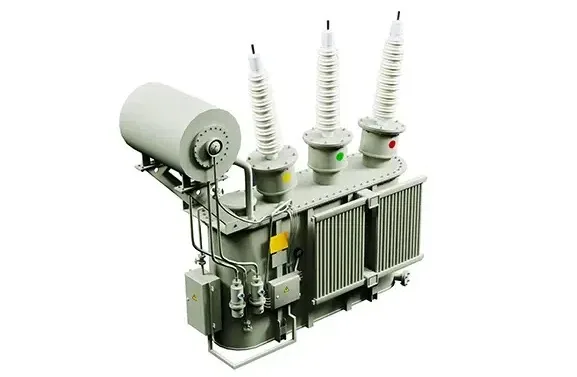In a world where electricity is the lifeblood of modern society, power transformers play a pivotal role in ensuring a steady and reliable supply of electrical energy. These unassuming giants silently stand guard in substations, stepping up or down voltage levels, and facilitating the efficient transmission and distribution of electricity. This article takes a comprehensive look at power transformers, their significance, and how they are shaping the future of energy distribution.
Power transformers are the unsung heroes of the electricity distribution network. They are vital in ensuring that electricity generated at power plants reaches our homes, businesses, and industries with the right voltage and minimal energy loss.
The Basics of Power Transformers
At their core, power transformers are electromagnetic devices that transfer electrical energy between two or more circuits through electromagnetic induction. They consist of primary and secondary coils wound around a ferromagnetic core.
Types of Power Transformers
- Distribution Transformers
Distribution transformers are responsible for stepping down high-voltage electricity from power lines to the lower voltages used in households and businesses. They are a common sight on utility poles.
- Power Transmission Transformers
Power transmission transformers, on the other hand, step up voltage levels for long-distance transmission over high-voltage lines. They are typically found in substations.
- Specialty Transformers
Specialty transformers serve unique purposes, such as rectifying or regulating voltage for specific industrial applications.
- Working Principle
The working principle of power transformers is based on Faraday’s law of electromagnetic induction. When alternating current (AC) flows through the primary coil, it creates a magnetic field in the core, inducing a voltage in the secondary coil.
Importance of Power Transformers
Power transformers ensure that electricity can be transmitted efficiently over long distances, reducing energy loss and making electricity accessible to remote areas.
The Evolution of Power Transformers
Over the years, power transformers have undergone significant transformations. They have become more efficient, reliable, and adaptable to the changing needs of the electrical grid.
Innovations in Transformer Technology
- Smart Transformers
Smart transformers are equipped with advanced monitoring and control systems that enable real-time performance optimization and remote diagnostics.
- Superconducting Transformers
Superconducting transformers utilize superconducting materials to achieve near-zero electrical resistance, significantly reducing energy losses.
- Eco-Friendly Transformers
In response to environmental concerns, eco-friendly transformers use biodegradable and non-toxic insulating oils, reducing their ecological footprint.
Challenges in Transformer Industry
- Aging Infrastructure
Many power transformers worldwide are aging and require maintenance or replacement to ensure grid reliability.
- Environmental Concerns
The use of mineral oil in transformers raises environmental concerns due to the risk of leaks and contamination.
Future Trends in Power Transformers
The future of power transformers is marked by advancements in materials, design, and digitalization. These innovations will improve efficiency, reduce maintenance costs, and enhance grid resilience.
Role in Renewable Energy
Power transformers play a critical role in integrating renewable energy sources into the grid by facilitating the efficient transfer of energy from wind and solar farms.
Conclusion
In conclusion, power transformers are the silent heroes of our modern world, ensuring that electricity reaches every corner of our lives efficiently and reliably. As technology advances, so will these essential devices, leading us toward a more sustainable and interconnected energy future.
FAQs
Q1: What is the lifespan of a typical power transformer?
The lifespan of a power transformer can vary but is often around 30 to 40 years. Regular maintenance can extend its operational life.
Q2: Are there any safety precautions when working with power transformers?
Yes, working with power transformers can be hazardous. It’s essential to follow safety guidelines and use protective equipment when necessary.
Q3: Can power transformers be recycled?
Yes, many components of power transformers can be recycled, reducing their environmental impact.
Q4: How do smart transformers improve grid efficiency?
Smart transformers can monitor the grid in real-time and make adjustments to optimize energy flow, reducing energy wastage and enhancing efficiency.
Q5: Are there any emerging technologies that could revolutionize power transformers?
Emerging technologies like solid-state transformers and advanced materials hold the potential to revolutionize power transformer design and performance.
In this rapidly evolving energy landscape, power transformers remain at the forefront of ensuring a reliable and sustainable power supply. Stay informed and be part of the transformation by exploring the possibilities of power transformers in shaping our future.

